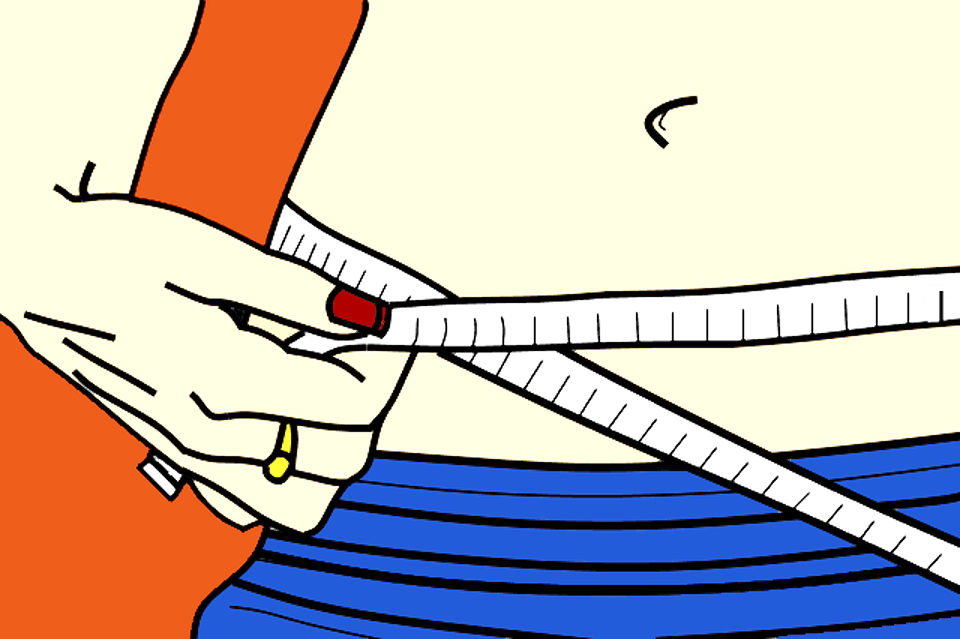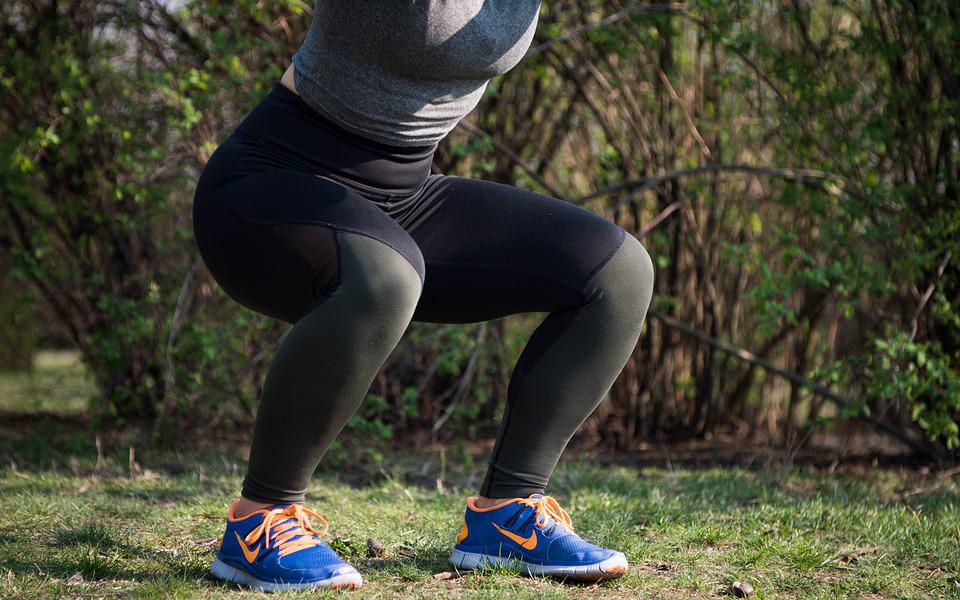
When you focus on just a couple of small changes at a time, you begin to develop healthy habits that lasts for a lifetime, rather than an all-or-nothing approach that more often than not fails because it’s too hard to follow.
Here are some tips from experts to help you lose weight, eat less, and feel better.
- Assess your fitness level
You most likely have a good understanding of how physically fit you are. To assess your aerobic and muscular fitness, flexibility, and body composition, consider recording:
- Your pulse rate before and immediately after walking 1 mile (1.6 kilometers)
- How long it takes to walk 1 mile, or how long it takes to run 1.5 miles (2.41 kilometers)
- How many standard or modified pushups you can do at a time
- How far you can reach forward while seated on the floor with your legs in front of you
- Your waist circumference, just above your hipbones
- Your body mass index
- Keep a food journal
Eating a bag of chips without paying attention could lead to eating the whole bag. Keeping track of the meals and snacks you eat can help you control how much you eat. It can also help you make better decisions about what to eat. For example, if you want a bag of chips every day at 3pm, keep a bag of cashews by your desk so you don’t have to go to the vending machine.
Writing in a journal can also help you to monitor your other eating habits, says Lutes. If you find that you’re regularly skipping meals, eating the same thing each week, or overeating when you’re feeling stressed, you can use this information to figure out what changes you need to make.
- Find every opportunity to move more
If you want to lose weight, you should get up and move around during your favorite TV shows. You can do jumping jacks, run in place, go up and down some stairs, or start dancing. Anything that gets your heart rate up so you feel somewhat breathless is good. Do it for each 2-minute commercial break, and you’ll burn an extra 270 calories a day.
- Design your fitness program
It’s easy to say that you’ll exercise every day. As you design your fitness program, keep these points in mind:
- Consider your fitness goals. Are you starting a fitness program to help lose weight? Or do you have another motivation, such as preparing for a marathon? Having clear goals can help you gauge your progress and stay motivated.
- Create a balanced routine. Get at least 150 minutes of moderate aerobic activity or 75 minutes of vigorous aerobic activity a week, or a combination of moderate and vigorous activity. The guidelines suggest that you spread out this exercise over the course of a week. To provide an even greater health benefit and to assist with weight loss or maintaining weight loss, at least 300 minutes a week is recommended.
- But even small amounts of physical activity are helpful. Being active for short periods of time throughout the day can add up to provide health benefits.
- Do strength training exercises for all major muscle groups at least two times a week. Aim to do a single set of each exercise, using a weight or resistance level heavy enough to tire your muscles after about 12 to 15 repetitions.
- Start low and progress slowly. If you’re just beginning to exercise, start cautiously and progress slowly. If you have an injury or a medical condition, consult your doctor or an exercise therapist for help designing a fitness program that gradually improves your range of motion, strength, and endurance.
- Build activity into your daily routine. Finding time to exercise can be a challenge. To make it easier, schedule time to exercise as you would any other appointment. Plan to watch your favorite show while walking on the treadmill, read while riding a stationary bike, or take a break to go on a walk at work.
- Plan to include different activities. Different activities (cross-training) can keep exercise boredom at bay. Cross-training using low-impact forms of activity, such as biking or water exercise, also reduces your chances of injuring or overusing one specific muscle or joint. Plan to alternate among activities that emphasize different parts of your body, such as walking, swimming, and strength training.
- Try high-interval intensity training. In high-interval intensity training, you perform short bursts of high-intensity activity separated by recovery periods of low-intensity activity.
- Allow time for recovery. Many people start exercising with frenzied zeal — working out too long or too intensely — and give up when their muscles and joints become sore or injured. Plan time between sessions for your body to rest and recover.
- Put it on paper. A written plan may encourage you to stay on track.
- Limit packaged, processed foods
Limit them as much as possible from your diet.
Eat less of them “If you’re eating six of these foods a week, try to go down to five,” Lutes advises.
Cut back gradually. Each week, drop another food. Cut out one more each week until you’re at no more than one or two processed foods a week
At the same time, replace them with healthier snacks instead like baby carrots with hummus, Greek yogurt, and fresh berries, or natural peanut butter with an apple.
- Go on more walks throughout the day
If you have errands that are within one mile of each other, it is better to walk to them at a brisk pace rather than drive. This is because each additional hour you spend driving is associated with a six percent increase in obesity.
The U.S. Department of Health & Human Services recommends that adults get at least 150 minutes of moderate-intensity aerobic activity or 75 minutes of vigorous-intensity aerobic activity each week.
- Incorporate strength training into your routine
You can build more metabolism-revving muscle by doing basic bodyweight exercises, like squats and push-ups, in a short amount of time without any extra equipment. According to Wayne Westcott, PhD, fitness research director at Quincy College, you should do each exercise until your muscles are exhausted, which should be within 60 to 90 seconds. Adding a resistance band to basic moves can increase the difficulty and result in more muscle growth.
Do 10 repetitions of knee push-ups, squats, crunches, lunges, and chair dips. Then, over time, increase the number of repetitions until your muscles feel fully fatigued.
- Use the stairs whenever possible
If you’re stuck between riding and climbing, adding a few minutes of stair climbing to your routine can help offset annual weight gain. Walking up stairs also provides some strength-training benefits for your glutes and quads.
- Use a fitness tracker
Fitness trackers are a great way to help you keep track of your health and fitness goals. By monitoring your daily activity, sleep, and workout habits, you can gain valuable insights into your overall health. Most fitness trackers will track your steps taken, distance traveled, and calories burned. Some also track your sleep quality, heart rate, and even your eating habits. By having all this information in one place, you can easily see how well you’re progressing towards your goal of getting 150-300 minutes of moderate-intensity exercise per week.
- Prepare your own lunch
If you bring your lunch to work more often, you will save thousands of calories and hundreds of dollars over the course of a year. For example, a pre-made chicken Caesar wrap from a chain restaurant has 610 calories, 40 percent of which come from fat. It also has 1,440 milligrams of sodium, which is more than half the recommended daily amount.
You can make a healthier sandwich at home by using chicken breast on whole-wheat bread with light mayo, tomatoes, and Romaine lettuce. This will help you cut calories and sodium. “When you make and eat your own food, you not only control the quality and portion sizes but also reduce the amount of sugar, salt, and fat that you’re consuming, which can be significantly higher in restaurant fare,” says Ashley Koff, RD, a registered dietitian based in Washington, D.C.
- Assemble your equipment
Choose shoes that are designed for the activity you will be doing. For example, running shoes are lighter in weight than cross-training shoes, which are more supportive.
When selecting exercise equipment to invest in, it is important to choose something that is practical, enjoyable, and easy to use. You may want to try out different types of equipment at a fitness center before making a decision to purchase your own equipment.
Fitness apps or activity tracking devices may be useful in monitoring activity levels, such as tracking distance, calories burned, or heart rate.
- Enjoy dessert
It can actually be helpful to treat yourself to dessert when you’re trying to lose weight. Depriving yourself of treats can lead to overeating, so it’s better to have a smaller portion of something you really enjoy. Pay attention to how it tastes and smells, savor each bite, and stop when you’re satisfied.
Lutes says that being more mindful of what you’re eating will make you feel more satisfied. “Many people will find that they’re content after just a couple of bites and are better able to stop eating when they’re satisfied,” she explains.
- Sip wisely
It is better to have a smoothie than fruit juice because smoothies contain the fiber from fruits and vegetables which makes them more filling and nutritious. Smoothies should have a balance of protein, carbs, and healthy fats in order to be healthy. Protein can be added to a smoothie from protein powders, low-fat milk or unsweetened nut milk, Greek yogurt, or oatmeal. Extra fiber and volume can be added to a smoothie from dark, leafy greens, frozen cauliflower, and other veggies. Finally, chopped nuts can be added to a smoothie for a boost of healthy fats.
- Stay hydrated
If you’re confusing thirst for hunger, you may be eating more food than you actually need. Drink water throughout the day to stay hydrated. This will also help with better digestion and a revved-up metabolism. Eight glasses of water a day is generally recommended, but this may vary depending on how active you are, medications you’re taking, etc. Drink water whenever you’re thirsty and before, during, and after a workout. You can also stay hydrated by eating more water-rich fruits and vegetables.
- Monitor your progress
You should retake your personal fitness assessment six weeks after you start your program, and then again every few months. This will help you to monitor your progress and see if you need to make any changes to the amount of time you are exercising.
If you lose motivation, set new goals or try a new activity. Exercising with a friend or taking a class at a fitness center may help, too. Losing motivation can be frustrating, but setting new goals or trying new activities may help you find your motivation again. Exercising with a friend or taking a class at a fitness center can also be helpful.
Making the decision to start exercising is an important step, but it doesn’t have to be a daunting one. By being thoughtful about your plan and taking things slowly, you can develop a healthy habit that will last you a lifetime.














